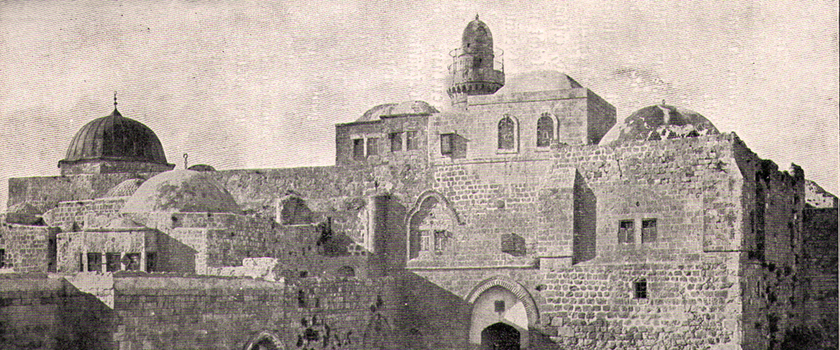 The building complex of the Room of the Last Supper on Mount Zion. The Catholics would have been very happy to acquire it.
The building complex of the Room of the Last Supper on Mount Zion. The Catholics would have been very happy to acquire it.
The strong and even violent interest of Europeans for the Holy Land had to a large extent dried up after the crusades. It was only with Napoleon's invasion of Egypt (1798-1801) that their vision was again directed toward the Orient. In the spirit of a piously clad colonial policy the European powers now raced to establish their presence in the biblical lands. Although in the previous centuries it was above all the Franciscans, in addition to the local Oriental and Orthodox Churches, who cared for the pilgrimage sites and the local Christians, there now began to arrive in the Holy Land ever increasing numbers of Christians from all the European confessions and nations. They built pilgrim hostels (for example, the Austrian Hospice in the center of the Old City of Jerusalem), churches and monasteries, or founded whole colonies such as the “German colony” of the German Templers.
German “engagement” in the Holy Land
Against the background of the slowly developing German national state under the leadership of the Hohenzollerns, the German presence in the Holy Land also slowly acquired visibility. Particularly striking was the Oriental tour of Emperor (Kaiser) Wilhelm II in the year 1898. In the context of this trip the Emperor personally dedicated the Church of the Redeemer in the morning of Reformation Day (October 31) near the Church of the Holy Sepulcher in Jerusalem. In a solemn ceremony in the afternoon of the same day, he handed over to the German Association of the Holy Land the piece of land on which our church and monastery would arise in the following years. In order to acquire this piece of land adjoining the Room of the Last Supper, several years of diplomatic and political activity had been necessary and finally the personal intervention of the Emperor with Sultan Abdulhamid II in Istanbul.